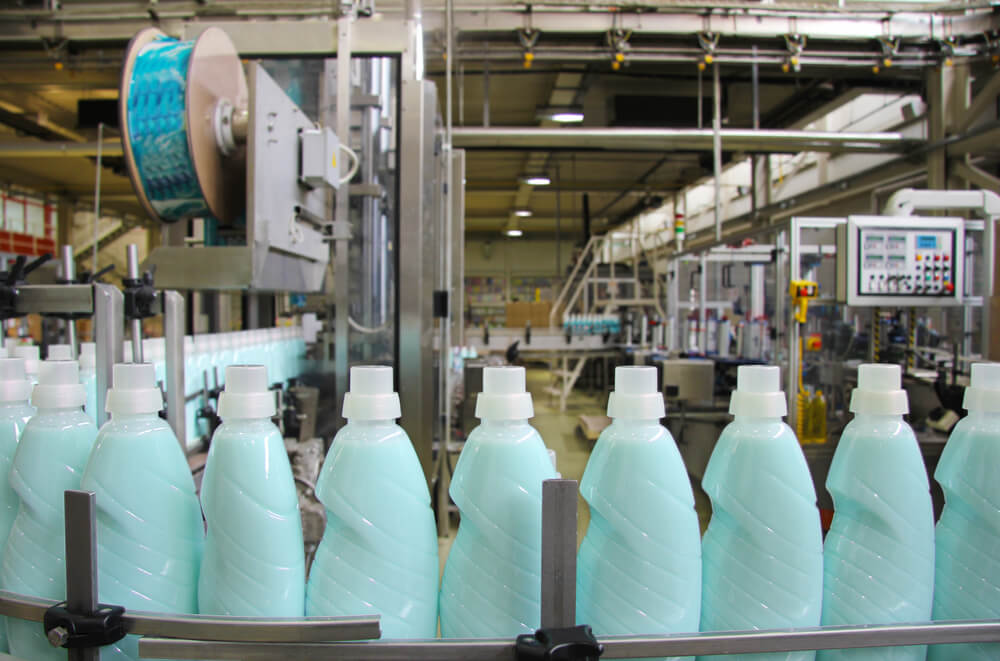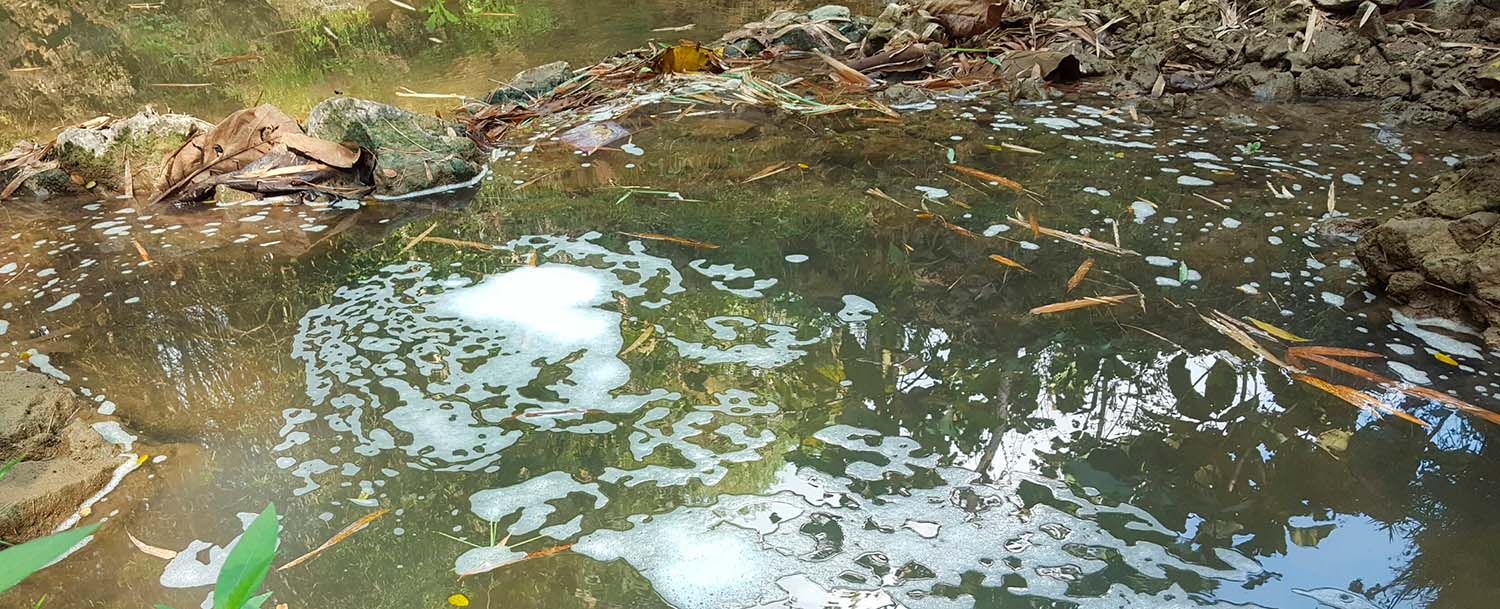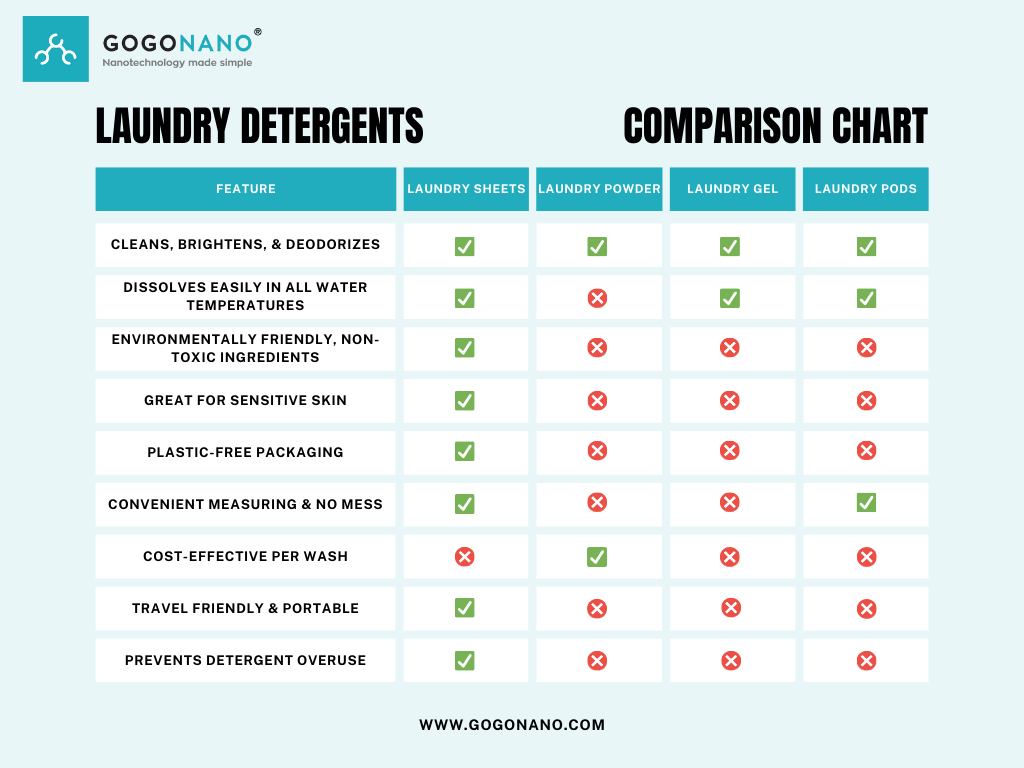In the quest for clean clothes, consumers are faced with a choice: traditional laundry detergents or the newer, eco-friendly laundry detergent sheets. This guide delves into the world of laundry care, comparing these two options in terms of production, usage, and environmental impact, providing you with the knowledge to make an informed decision.
Key Takeaways
- Laundry sheets offer convenience and less waste. Their pre-measured format eliminates overusing detergent and their compact size contributes to a smaller environmental footprint.
- Laundry sheets are often gentler on skin. Their simpler formulas with fewer harsh chemicals make them a good choice for sensitive skin.
- Cost and effectiveness vary. While laundry sheets can be more cost-effective over time, it’s important to consider individual needs and which format provides the best cleaning power for your laundry.
Understanding the Basics
Understanding the fundamental differences between traditional detergents and the newer laundry sheets is essential. Traditional detergents have long been the go-to choice, with their tried-and-tested formulas designed to combat a wide array of stains and odors. On the other hand, laundry sheets represent the cutting edge of laundry technology, offering an eco-friendly, convenient solution that caters to the needs of the environmentally conscious consumer without compromising on cleaning power.
What Are Traditional Laundry Detergents?
Traditional laundry detergents have been the cornerstone of laundry care for decades. These detergents come in various forms, including powders, liquids, and pods, and contain a mix of surfactants, enzymes, bleaches, and builders to tackle different stains and odors. They are designed to work in a range of water temperatures and are packaged in plastic jugs or cardboard boxes.
What Are Laundry Sheets?
Laundry detergent sheets are an innovative addition to the laundry aisle. These thin, biodegradable sheets are infused with concentrated detergent and dissolve completely in water. They offer a pre-measured, mess-free alternative to traditional detergents and are typically hypoallergenic, free from harsh chemicals, and come in recyclable or compostable packaging.
Production and Manufacturing
Exploring the contrast in laundry detergent production, this section examines the resource-intensive traditional methods and the sustainable practices shaping the future of laundry care.

How Traditional Detergents Are Made?
The creation of traditional laundry detergents is an intricate process carried out in expansive industrial complexes. It starts with producing synthetic surfactants, the primary cleaning agents, often derived from petrochemicals through energy-intensive reactions. These surfactants are combined with a host of other chemicals like builders to soften water, enzymes to tackle proteins and starches, and additional agents such as fragrances and optical brighteners for aesthetic appeal. While these ingredients enhance the cleaning properties and sensory experience, they can be environmentally persistent and potentially harmful to aquatic ecosystems upon entering water bodies.
Considerable water is used in making liquid detergents, and the energy consumed in heating and transporting these products adds to their carbon footprint. The packaging of these detergents, predominantly plastic, presents further environmental challenges. Many of these plastics are not fully recyclable, leading to an accumulation of waste in landfills and oceans, where they can take centuries to break down, leaking pollutants and posing risks to wildlife. The environmental impact of these practices has led to a push for more sustainable laundry products that prioritize biodegradable ingredients, reduced packaging, and energy-efficient production.
The Creation of Laundry Sheets
Laundry sheets are developed through eco-friendly processes that aim to reduce environmental impact. While they use similar components to traditional detergents, the key difference lies in their sourcing. Laundry sheets typically derive their ingredients from sustainable and natural sources, as opposed to the petrochemical origins of many traditional detergents.
The production process involves carefully mixing these naturally-derived surfactants, enzymes, and other cleaning agents. This mixture is then compressed into thin, biodegradable sheets. The manufacturing process is designed to minimize water and energy consumption.
Additionally, the packaging for these sheets often utilizes recyclable or compostable materials, further aligning with sustainability goals. This approach results in a product that offers effective cleaning while potentially reducing environmental impact compared to traditional liquid or powder detergents.
Chemical Composition and Skin Sensitivity
This section delves into the chemical makeup of laundry detergents and their implications for skin sensitivity. We’ll uncover how the traditional detergent industry’s reliance on harsh chemicals contrasts with the emerging trend of laundry sheets that prioritize skin health and environmental sustainability. Additionally, we’ll highlight the innovative formulations of laundry sheets that are setting new standards for gentle, skin-friendly cleaning.
Chemicals in Traditional Detergents
Traditional detergents can contain a variety of chemicals that may cause skin irritation or allergic reactions in sensitive individuals. Phosphates, which are often used to soften water and improve cleaning efficiency, can lead to skin problems and have a detrimental effect on aquatic life when they enter waterways.
How Does Traditional Laundry Detergent Harm The Environment
Laundry detergent is far more than just a basic cleansing soap. It contains a huge number of harmful chemicals that have a serious impact on our environment. Some of the most concerning ones are:
Phosphates – linked to cardiovascular (heart) disease as well as osteoporosis. These toxins are particularly damaging to the marine environment when dispersed in wastewater from your wash.
Bleach – often used to brighten whites, its toxic fumes cause respiratory distress and on contact with skin and eyes it is able to cause caustic burns.
Formaldehyde – A chemical usually associated with the preservation of dead bodies. This toxic ingredient as classified by the EPA, is a class B1 probable carcinogen. This means it has been linked with an increased risk of cancer.
Ammonium Sulfate and Ammonium Quaternary Sanitizers – harsh cleansing agents that are corrosive and toxic. They can cause eye, skin and lung damage even with minimal exposure.
Dioxane (1,4 Dioxane/ Diethylene Dioxide/ Diethylene Ether/ Dioxan) is quite possibly one of the worst additives. Dioxane is also a carcinogen and has been known to pose a combustion risk. Exposure to this toxin can damage your kidneys, lungs, central nervous system, eyes, skin and respiratory function.
The Hypoallergenic Nature of Laundry Sheets
Laundry sheets are intentionally formulated with a minimalistic chemical composition, often utilizing natural ingredients and plant-based surfactants. This streamlined approach not only reduces potential skin irritants but also caters to those with sensitive skin or allergies. Unlike traditional detergents, which may contain a plethora of synthetic chemicals, laundry sheets opt for milder cleaning agents that provide effective cleaning without the risk of allergic reactions. Their hypoallergenic properties make them a preferred choice for consumers seeking a skin-friendly laundry solution.
Moreover, the gentleness of laundry sheets extends to the care of fabrics. They are designed to clean without compromising the textile’s structure, thereby preserving the longevity of clothing. The environmental benefits are equally significant; the biodegradable nature of these sheets means they break down naturally without leaving harmful residues in water or soil, aligning with eco-conscious practices and reducing the ecological impact of laundry activities.

Usage and Efficacy
Laundry sheets are redefining fabric care with their innovative approach to efficacy and usage. These eco-friendly alternatives to traditional detergents deliver effective cleaning power in a pre-measured, dissolvable sheet, minimizing waste and preventing the common issue of detergent residue. While traditional detergents offer a broad spectrum of enzymes for various stains, laundry sheets maintain a competitive edge with their simplicity and suitability for both hot and cold water cycles, catering to the needs of the environmentally and health-conscious consumer.
Effectiveness of Traditional Detergents
Traditional detergents have been optimized for performance across a spectrum of conditions. They are formulated to work in various water temperatures, from cold to hot, and are effective for different load sizes. The presence of specific enzymes and other chemicals in these detergents means they can tackle a wide range of stains, from protein-based to grease and oil.
However, the effectiveness of traditional detergents can be influenced by the hardness of the water and the accuracy of the dosage. Overuse is common, leading not only to wasted detergent but also to potential residue on clothes and in machines.
Performance of Laundry Sheets
Laundry sheets are designed for convenience and simplicity. They dissolve easily in both hot and cold water and are pre-measured to avoid the issue of overuse. While they may not contain the same range of targeted enzymes as traditional detergents, many users find them effective for general laundry needs and appreciate the added benefit of fabric care due to their gentle formulation.
Comparative studies and consumer feedback suggest that laundry sheets perform well in everyday laundry scenarios, though heavily soiled items may require additional treatment or a double dose of the product.

Environmental Impact
The environmental impact of conventional laundry detergents is increasingly recognized. These detergents often fail to fully biodegrade, releasing harmful substances into our water systems, including rivers and oceans. Toxic elements such as cadmium and arsenic, which are sometimes present in detergents, can pose significant risks to aquatic ecosystems. Research indicates that phosphates, frequently used in these cleaning products, accumulate in bodies of water, causing eutrophication. This process results in excessive algal growth, which depletes oxygen in the water and can suffocate aquatic life, including fish and plants.
The Sustainable Advantage of Laundry Sheets
Laundry sheets are at the forefront of sustainable fabric care, distinguished by their environmentally conscious components and manufacturing process:
- Plant-Based Surfactants: Unlike traditional detergents that rely on petrochemicals, laundry sheets use surfactants derived from renewable plant sources, which offer effective cleaning while being more gentle on the environment.
- Biodegradable Fibers: The structural material of the sheets is composed of biodegradable fibers that break down naturally, leaving no harmful residues in the ecosystem.
- Natural Enzymes: To tackle various stains, laundry sheets incorporate enzymes sourced from natural organisms, ensuring biocompatibility and reducing the risk of aquatic toxicity.
- Minimalist Packaging: Emphasizing sustainability, the packaging of laundry sheets is designed to be either fully recyclable or compostable, contributing to waste reduction goals.
- Carbon Footprint Reduction: The compact and lightweight format of laundry sheets significantly lowers the carbon emissions associated with their transportation and distribution.
- Water Conservation: By providing a pre-measured amount of detergent, laundry sheets eliminate the common problem of overuse, saving water and reducing the frequency of purchasing new detergent.
Cost Analysis
The Economic Costs of Traditional Detergents
When considering the economic implications of traditional detergents, the initial purchase price represents just a fraction of the actual cost. Consumers often use more detergent than necessary, influenced by the misconception that more soap equals cleaner clothes. This habit of overuse not only increases household expenses over time but also accelerates the depletion of detergent supplies, necessitating more frequent purchases. Furthermore, the environmental degradation caused by these detergents, including water pollution and the energy-intensive production process, incurs hidden costs that are absorbed by communities and ecosystems.
These hidden environmental costs have far-reaching economic consequences. The pollution of waterways necessitates additional treatment for safe use, which can strain municipal budgets and lead to increased utility bills for residents. Waste management becomes more complex and costly as well, with plastic packaging from detergents contributing to the growing volume of refuse that requires processing. Over time, these environmental and societal costs can lead to higher taxes and living expenses, illustrating that the true cost of traditional detergents extends well beyond their shelf price.
Cost-Effectiveness of Laundry Sheets
Laundry sheets offer a more economical alternative to traditional detergents over time. Their pre-measured design eliminates the guesswork and prevents the common issue of detergent overuse, ensuring optimal use of every sheet. This not only conserves the product but also translates into direct savings for consumers, who will purchase laundry detergent less frequently. Additionally, the compact and lightweight nature of laundry sheets reduces manufacturing and shipping costs. These savings can be passed on to the consumer, making laundry sheets a cost-effective choice.
The environmental advantages of laundry sheets also contribute to their cost-effectiveness. By minimizing the use of plastics in packaging and reducing the reliance on harsh chemicals, laundry sheets lessen the burden on waste management systems and decrease the need for environmental remediation efforts. These reductions have a ripple effect, potentially lowering community expenses related to waste processing and health care costs linked to chemical exposure. Thus, the economic benefits of laundry sheets extend beyond immediate savings, contributing to broader financial advantages for both individuals and society.
Consumer Convenience and Accessibility
Accessibility of Traditional Detergents
Traditional detergents enjoy a stronghold in the marketplace, largely due to their pervasive presence across various retail environments. From expansive supermarkets to modest corner shops, these detergents are readily available, making them a convenient choice for the everyday shopper. The extensive distribution network of these products ensures that they are within easy reach for most consumers, contributing to their continued popularity.
This market saturation is underpinned by years of established brand presence and consumer loyalty, which have been cultivated through persistent marketing efforts and ongoing product innovation. Such brand familiarity reassures consumers, often making traditional detergents a default purchase. The result is a self-reinforcing cycle of accessibility and demand, maintaining the status quo of traditional detergents as a household staple.
The Rising Popularity of Laundry Sheets
Laundry sheets are a relatively recent innovation in the home care market, but they are quickly carving out a significant niche. Their appeal lies in the combination of user-friendly convenience and a strong eco-conscious ethos, which aligns with the values of a growing segment of consumers. The shift towards environmentally responsible products has been a key driver in their burgeoning popularity.
Moreover, the advent of e-commerce has played a pivotal role in making laundry sheets more accessible to a wider audience. They are prominently featured on various online shopping sites, dedicated platforms for sustainable goods, and are increasingly making their way onto the shelves of traditional retail outlets. This expanding availability is a testament to the changing consumer preferences and the evolving landscape of the household cleaning market, where sustainability is becoming as important as efficacy.

Disposal and Recycling
Disposal Issues with Traditional Detergent Containers
The disposal of traditional detergent containers poses significant challenges. While many are technically recyclable, the reality is that a substantial portion ends up in landfills due to contamination or improper disposal. The impact of this plastic waste is far-reaching, contributing to the growing problem of environmental pollution and the depletion of resources required to produce new plastic containers.
Disposal of Laundry Sheets
In contrast, laundry sheets offer a more environmentally friendly end-of-life scenario. Their packaging is often designed to be compostable or recyclable, aligning with zero-waste principles. The sheets themselves, being biodegradable, leave no trace once they dissolve in water, which significantly reduces their environmental impact compared to traditional detergents.
The Future of Laundry Detergents
Innovations in Traditional Detergent Formulations
The landscape of the detergent industry is dynamic, with continuous advancements shaping the future of laundry care. Recognizing the growing environmental concerns, many detergent brands are actively seeking to minimize their ecological footprint. This pursuit of sustainability has led to the creation of highly concentrated detergent formulas, which deliver the same cleaning power in smaller doses, thereby reducing the need for excessive packaging.
Alongside concentration, there’s a shift towards incorporating plant-derived ingredients, which are gentler on the environment and often renewable. These natural components are increasingly replacing their synthetic counterparts, contributing to a cleaner production process and a safer product for both consumers and the planet. Additionally, the industry is experimenting with refillable detergent systems, aiming to cut down on single-use plastic containers and encourage a reuse mindset among consumers, further aligning product design with environmental responsibility.
The Evolution of Laundry Sheets
Laundry sheets stand at the forefront of innovation within the home care sector, with their trajectory set towards expansion and refinement. Technological advancements are paving the way for these products to boast enhanced cleaning efficacy, catering to a variety of fabric types and stains with greater precision. As the industry evolves, consumers can anticipate a wider selection of fragrances and specialized features tailored to specific laundering needs, from delicate care to robust stain removal.
The environmental aspect of laundry sheets is also expected to improve, with ongoing research into even more sustainable materials and manufacturing processes. The commitment to eco-friendliness is a strong selling point that resonates with the modern consumer, and as awareness of environmental issues grows, so does the demand for products that align with a sustainable lifestyle. This growing consumer consciousness is likely to drive further innovations in laundry sheets, ensuring they not only clean clothes effectively but also contribute positively to the health of our planet.

Market and Trends
The market for laundry detergent sheets has seen significant growth in recent years. According to a market analysis by Global Market Insights, the sector is expected to grow by 15% annually from 2022 to 2027. This growth is attributed to the increasing consumer demand for eco-friendly and convenient cleaning products.
Final Thoughts
Throughout this guide, we have delved into the complex world of laundry care, examining the strengths and weaknesses of both traditional detergents and the emerging laundry detergent sheets. We’ve seen how the tide is turning in favor of sustainability in our cleaning habits, a change driven by increased global awareness and responsibility. As the public becomes more attuned to the environmental ramifications of their choices, laundry sheets emerge as a beacon of innovation, offering a path to a more sustainable and environmentally considerate future in home care. Embrace the change and join the movement towards a cleaner planet—make the switch to laundry detergent sheets today and be part of the solution for a greener tomorrow.
FAQ: Laundry Sheets vs. Traditional Laundry Detergents
Are laundry sheets as effective as traditional detergents?
Laundry sheets are effective for general laundry needs and are pre-measured to prevent overuse. While they may not contain the same range of targeted enzymes as traditional detergents, they are suitable for most everyday laundry scenarios. Heavily soiled items may require additional treatment.
How do laundry sheets impact the environment compared to traditional detergents?
Laundry sheets have a smaller ecological footprint. They are biodegradable, use minimal packaging, and reduce the carbon footprint associated with transportation. Traditional detergents often fail to fully biodegrade and can release harmful substances into water systems, contributing to pollution and resource depletion.
Still Have Questions?
If you haven’t found the answer you’re looking for or need personalized product advice, we’re always ready to help. Our team is prepared to assist you in finding the best laundry solution that precisely meets your needs. Whether you have questions about our laundry sheets or other cleaning and protection products, don’t hesitate to contact us.